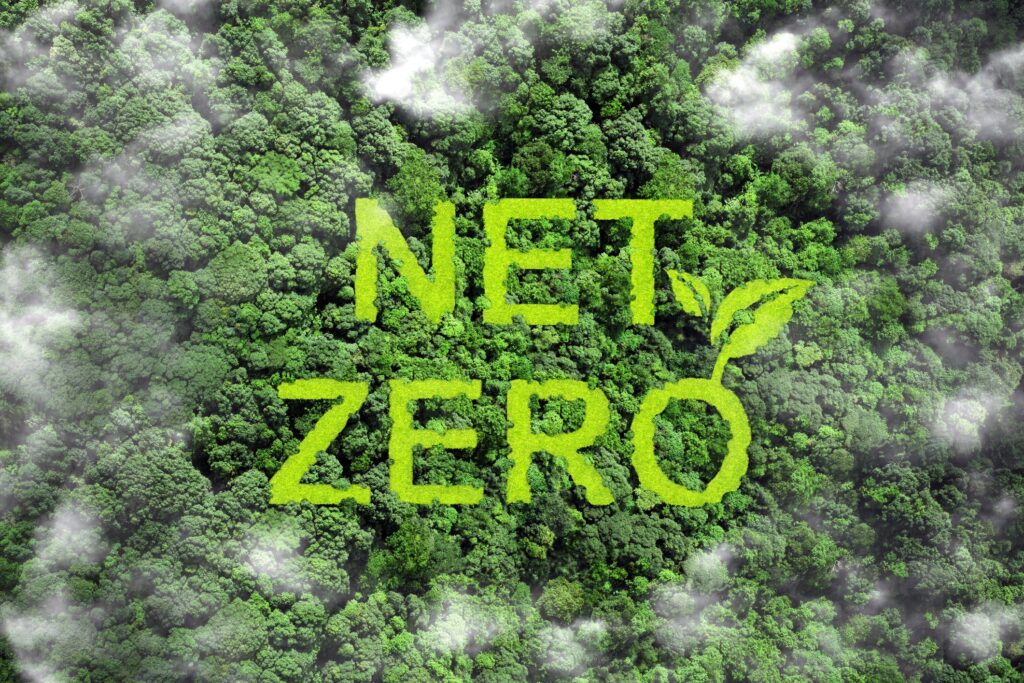Supply chain decarbonization, carbon standards, carbon markets, carbon credits, carbon offsets—these terms are being used more as the world becomes attuned to the need for sustainability. Companies have a responsibility to do their part in decarbonizing their supply chains, helping to reduce the carbon footprint of their customers. But many of these terms are often confusing, particularly carbon credits versus carbon offsets. Are they interchangeable, or two ways of thinking about the same concept? In short, the differences are subtle but nevertheless important.
Carbon Credits vs. Carbon Offsets
Here is the basic explanation of the difference between carbon credits and carbon offsets:
- Carbon credits measure emissions reduced or prevented from entering the environment.
- Carbon offsets are the measure of emissions removed from the environment.
Let’s take a closer look at each term and what they mean.
Carbon Credits
A carbon credit is effectively a voucher given by a governing authority that allows the holder to emit a specified amount of greenhouse gasses. If it is not redeemed, it represents a reduction of carbon dioxide from the environment because the entity holding the credit did not emit those emissions. This might have been accomplished through carbon insetting—reducing the carbon emissions attributed to their operations, specifically through sustainability initiatives impacting their own value chain. By emitting fewer emissions, the entity has the freedom to sell its carbon credits to other companies.
Carbon Offsets
Like carbon credits, carbon offsets are also measurable emission reductions. They most commonly represent the removal of existing carbon emissions from the environment, but they can also represent carbon emissions that were prevented from entering the environment. It all depends on the carbon offset project.
Examples of carbon offset projects:
- Clean energy investment – Generating power from renewable sources like wind instead of fossil fuels.
- Reforestation – Planting trees to absorb CO2 from the atmosphere.
- Carbon capture and storage – Capturing carbon emissions and storing them underground or using them rather than releasing them into the atmosphere.
- Community investment – Reducing emissions in underserved communities by introducing energy-efficient technology.
For projects to produce valid carbon offsets, they must be:
- Additional – The offset would not have occurred without the project.
- Permanent – The offset is not in place for only a limited amount of time.
- Counted once – The offset is retired to avoid being double-counted.
- Independently verifiable – The offset is verified for quality and transparency.
What is the Difference Between Carbon Credits and Carbon Offsets?
To fully understand the reason for the distinction between credits and offsets, it’s vital first to understand cap-and-trade programs.
Cap-and-Trade Programs
A cap-and-trade program is a system designed to help curb greenhouse gas emissions. The governing authority sets a cap on the amount of greenhouse gasses that can be emitted over a period of time by an entity like a company or power plant. The plan might be for the cap to decline gradually, so the total allowed emissions reduces year after year. With the cap set, the governing authority distributes allowances or permits for a specific amount of greenhouse gas, often in units of metric tons of CO2 equivalent.
Entities that reduce their emissions below their allotted amount can sell their extra allowances on the open market to entities that haven’t met their emission reduction goals. This creates a financial incentive for companies to invest in sustainability. At the end of the compliance period, each regulated entity turns over to the cap-and-trade program enough allowances to cover its emissions.
Some examples of cap-and-trade programs include:
- European Union Emissions Trading System (EU ETS) – Launched in 2005, this is the world’s first and largest international emissions trading system, covering more than 10,000 power stations and industrial plants in 30 countries: all EU countries plus Iceland, Liechtenstein, and Norway.
- Regional Greenhouse Gas Initiative (RGGI) – This U.S. cap-and-trade program for the power sector currently has 12 states participating: Connecticut, Delaware, Maine, Maryland, Massachusetts, New Hampshire, New Jersey, New York, Pennsylvania, Rhode Island, Vermont, and Virginia. It was started in 2005 and took effect in 2009.
- California’s Cap-and-Trade Program – In 2013, California began its own program, covering 450 entities, including large industrial facilities, electricity generators, and distributors of transportation, natural gas, and other fuels.
How Does This Relate to Carbon Credits and Carbon Offsets?
Cap-and-trade programs handle carbon emissions through allowances, which are later turned in or sold on the open market. Allowances are simply another term for carbon credits. Since cap-and-trade programs only apply to certain entities, most companies do not deal with them unless they are involved in power generation or industrial sectors. Any entity with remaining allowances or carbon credits after accounting for their carbon emissions can sell them directly to another company.
Carbon credits are somewhat like tokens at an amusement park. Tokens are created for use within that specific park but represent something valuable. If one person doesn’t use all their tokens and another person wants to buy them, they certainly can, and they would pay that person to receive them. Likewise, carbon credits were created for cap-and-trade programs. Carbon credits can be sold and transferred to companies not subject to these programs that are seeking to offset their carbon emissions voluntarily or for other reasons.
In the scope of the environmental impact, both credits and offsets represent one metric ton of CO2 equivalent reduced or removed from the atmosphere. Whether it is reduced or removed is an important distinction for entities under cap-and-trade programs. But for other companies, it matters less since both options benefit the environment. Some may choose to invest in both strategies, while others may focus on carbon offsets.
For Supply Chain Decarbonization, Quality Carbon Mitigation is Key
Regardless of whether a company chooses carbon credits or carbon offsets, they should be sure what they are purchasing is quality. Stakeholders, including customers, investors, and regulators, are looking for environmental accountability. Companies should demonstrate that their decarbonization efforts are credible so they can lead to tangible, real-world impact.
However, the carbon market can be complex, with various projects, standards, and pricing. Transparency helps companies ensure they are purchasing credits and offsets that support their sustainability goals and values. Emission reduction efforts should follow established and globally recognized standards, such as the Verified Carbon Standard or the Gold Standard. These standards set criteria for project performance and monitoring for consistency and quality.
At the same time, a company’s internal carbon mitigation strategy should also value careful assessment, data-driven decision-making, and a collaborative approach.
Comprehensive Assessment
A successful emission reduction strategy starts with thoroughly assessing the entire supply chain. The company must identify their emission sources, those both directly and indirectly attributed to their operations, across various stages of production, transportation, and distribution. Only with this foundation of analysis can companies gain a clear understanding of the biggest opportunities for them to reduce emissions most effectively.
Data-Driven Decisions
Data is essential at the beginning and remains crucial throughout the process. Accurate data collection and analysis should steer the direction of a company’s efforts. This way, they can continue identifying the emissions sources they need to prioritize as new ones emerge or as operations change. They can evaluate the impact of specific initiatives and make informed adjustments along the way, ensuring their strategies are grounded in data.
A Collaborative Approach
Emission reduction efforts can be most impactful when they use the power of collaboration. Companies can partner with suppliers, logistics providers, and others to establish transparency and open communication on their goals, needs, and best practices. They can address challenges from new perspectives and leverage one another’s expertise. With this level of cooperation, both collaborating parties can benefit from the resulting reduction in emissions.
Rely on the Expertise of Greenabl
In addition to collaborating with supply chain partners, companies can turn to experts like Greenabl, helping them get their decarbonization efforts on the right path with quality data, strategies, resources, and clarity.
Greenabl handles in-depth research on available offset project markets to make your project selection process simple. We use Cloverly to connect you to a consolidated marketplace for offset projects with recognized standards. Get an easy-to-use platform, with or without system integration, to take care of the details and complexities for you, and discover simplicity for your decarbonization journey.
To learn more, schedule a call with Greenabl today.


